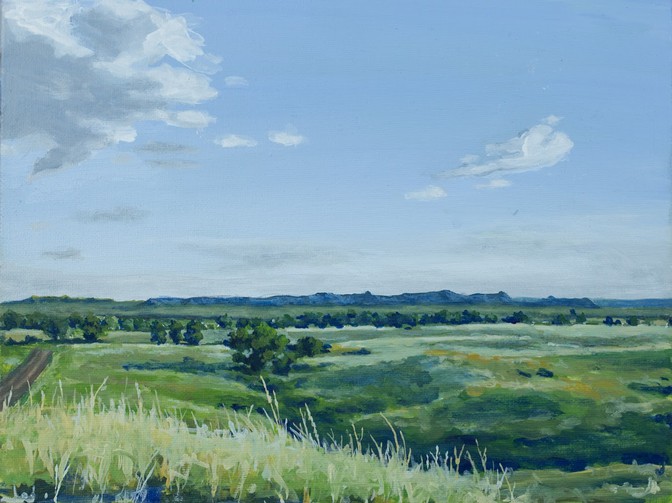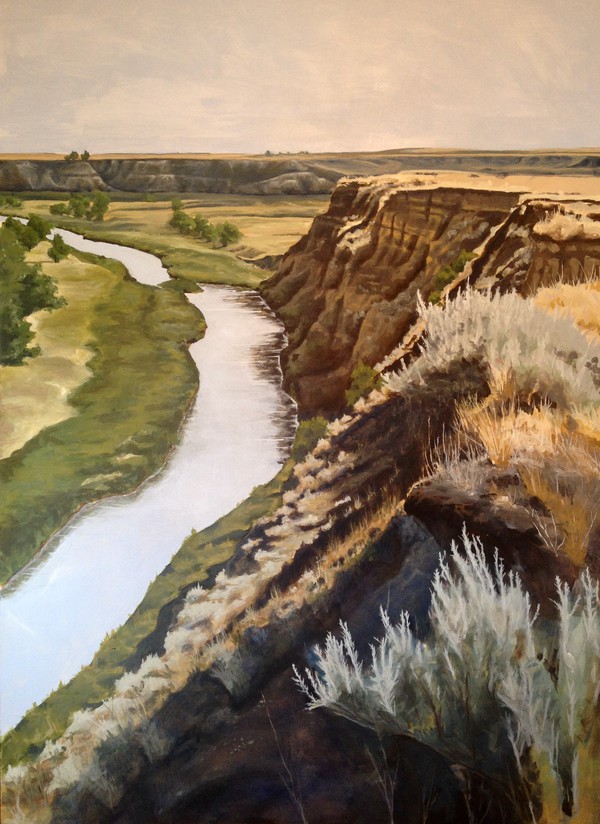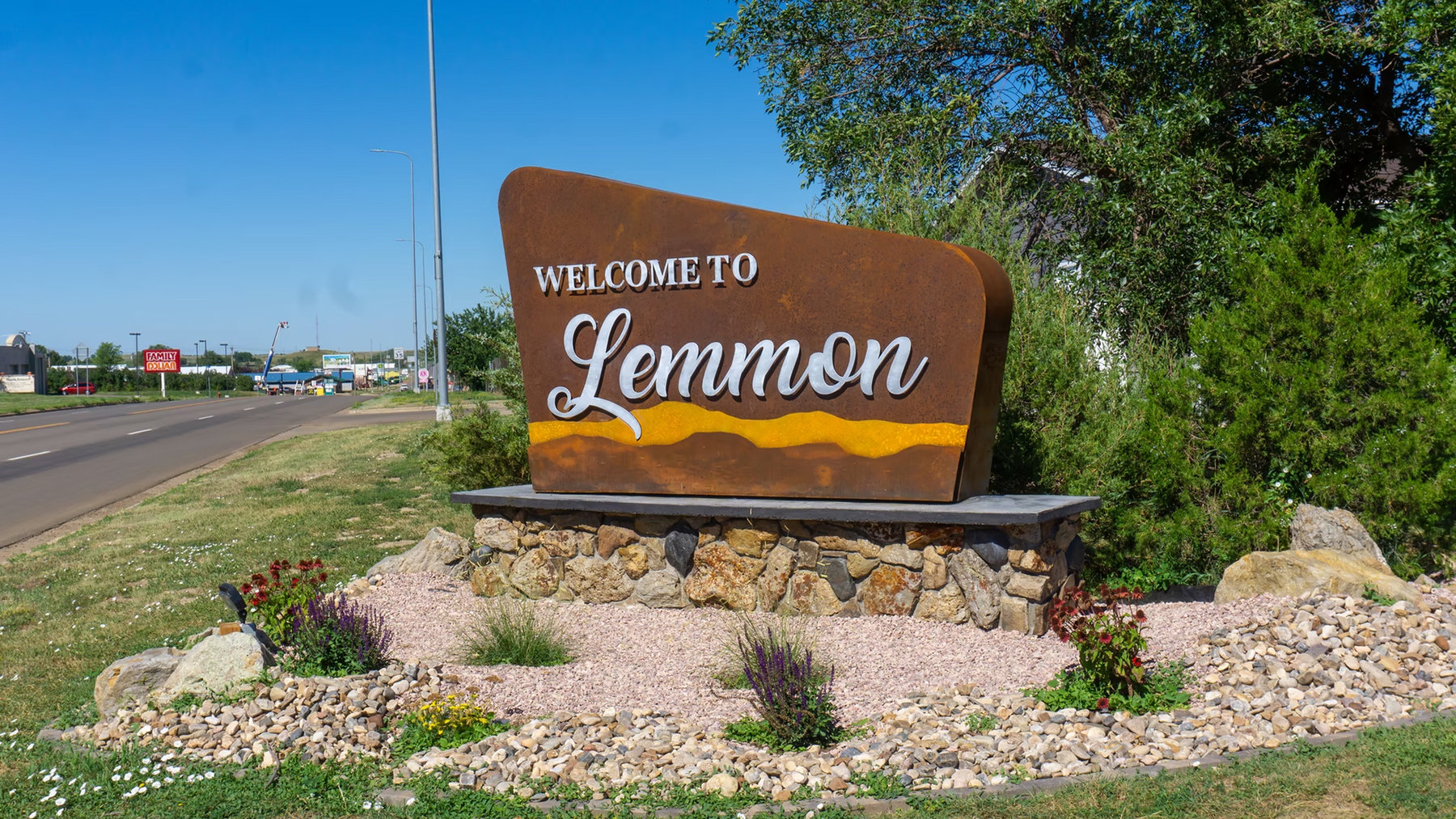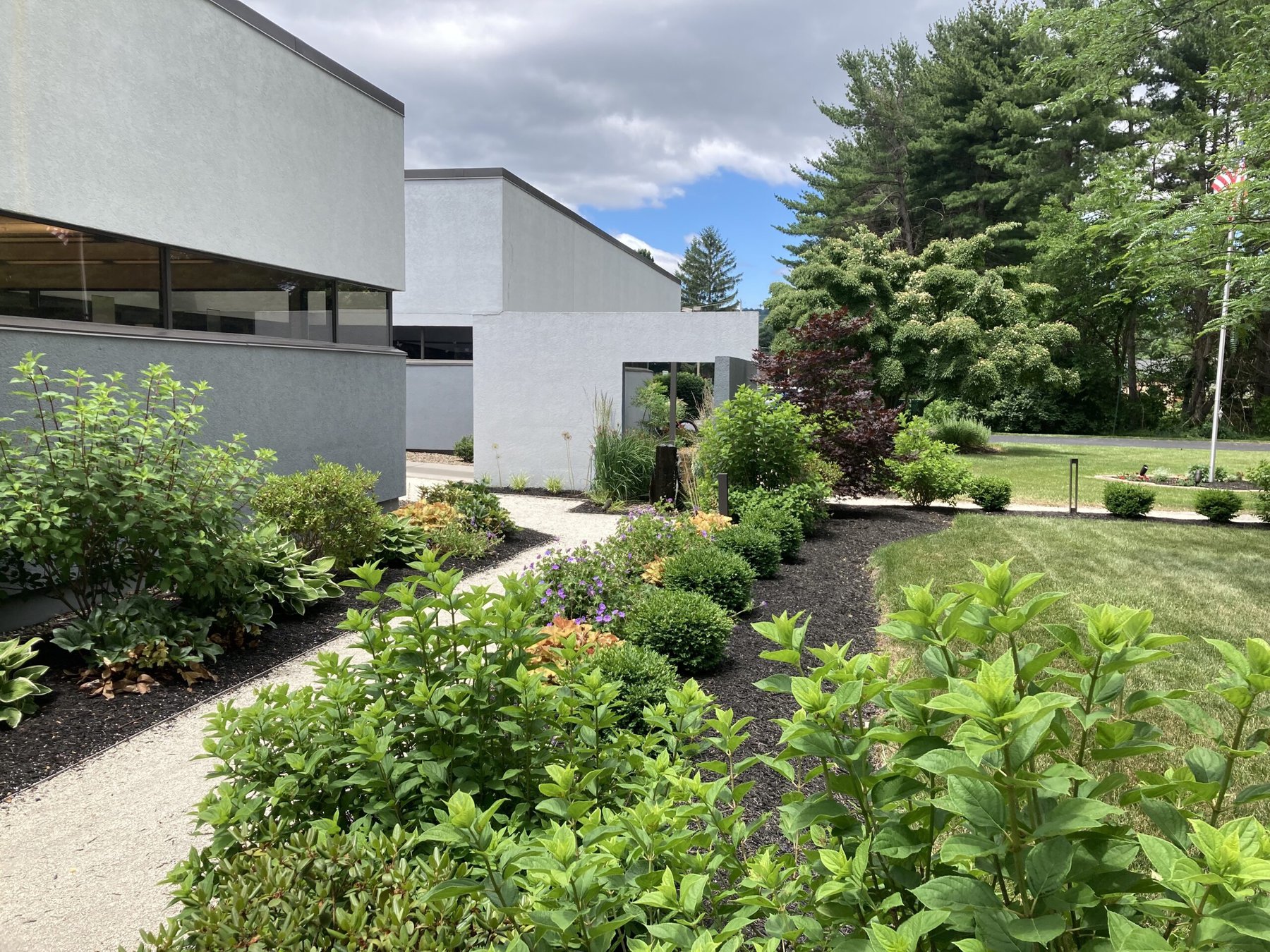In March of this year, as the coronavirus and its effects were unfolding, Dakota Resources, a 24-year-old community development financial institution (CDFI) in Renner, South Dakota, launched a series of Zoom coffee breaks for people from across the state. Every morning, at 10:30, a few dozen people logged in to talk for an hour or so about what was on their minds, and to share their stories. (More on this coming soon.)
I was invited in and have joined as many of them as I’ve been able to. That’s how I met Judy Larson. Larson lives in Lemmon, South Dakota—or more precisely, 14 miles north of Lemmon, just across the border in North Dakota, where she and her husband operate their family farm and ranch with their five home-schooled kids. I knew from the beginning that she must be one of the activists of Lemmon; the tale-teller is her Zoom background, an image of the bold new greeting sign, welcome to lemmon, which was designed, crafted, and installed by local citizens, artists, and artisans.
Larson talks frequently about the role of the arts in tiny Lemmon, population about 1,200. During our years of travel for our book, Our Towns, Jim Fallows and I witnessed similar stories about how the arts revived and reinvigorated other towns, from Ajo, Arizona, in the Sonoran Desert to Eastport, Maine, downeast on the Bay of Fundy. Lemmon may not be as far along that path as these towns, but as Larson has described, its sights are set high.
During this non-traveling COVID-era, I talked by phone and exchanged emails with Larson and a few of Lemmon’s artists. Here are the stories of two of them, Michael van Beek and John Lopez.
Michael van Beek grew up in Bismarck, North Dakota, spending a lot of time on his family’s farms, where he found his ease with rural life, nature, and wild animals. I caught up with Van Beek one evening after his day in his pickup truck, during sunflower-bug spraying season.
Van Beek said he enjoyed this season; it was nice to be out in the fields, looking at sunflowers all day. Besides sunflowers being beautiful, which Van Beek considers a priceless attribute, they are also a decent-paying crop for farmers. You can always count on the sunflower-oil market, and during the pandemic, there’s been a bump in black sunflower seeds, which people buy for their bird feeders.

Van Beek’s day job is at “the elevator,” which is the vernacular for the Lemmon’s Southwest Grain, a 1981 consolidation of eight grain cooperatives. He is an agronomist, advising farmers on choosing seeds and troubleshooting issues with crops. He talks with a genuine Dakotan humility about advising the farmers, some of whom have been at their trade for more years than he is old. Also, with coworkers at a local farmer’s coop, he tackles what sounds to me like everything to do with farming—from the tough work of loading, hauling, and delivering fertilizer, seed, feed, and grain with trucks, semis, and trains, to managing precision agriculture technology.
Van Beek, 33, was a good artist as a kid, and went on to study architecture, landscape architecture, and environmental design at North Dakota State University (NDSU). Somewhat by chance, he began spending time at a friend’s ranch near Lemmon, which led to his job at the elevator five years ago.

Van Beek also kept at his art. He got to know John Lopez, an artist and Lemmon legend, who encouraged Van Beek. He accompanied Lopez to the Black Hills Stock Show, bringing and even selling some of his art. Lopez invited him to paint in his studio. Van Beek developed his skills as a landscape painter, including his two-year production of a very large mural, more than 20 feet long, for the Lemmon Public Library. He also led the community-design team for the welcome to lemmon sign, from concept to fabrication.
Van Beek talked at length about what art has meant to Lemmon, careful to signal that he didn’t want to sound artsy-fartsy about it. I don’t think people from South Dakota are capable of sounding artsy-fartsy; I can say that, with my Midwest upbringing and ear. Van Beek spoke about how he thinks art can help people shape the places where they want to live.
As for Lemmon, Van Beek says that the town has “the fodder” for making a good life. It has tangible attributes like affordable houses, jobs, a low cost of living, the outdoors, and smart neighbors. It also has intangible appeals, like a sense of opportunity and community. And he brought up a point that Jim and I became convinced of during our travels, that small towns like Lemmon are closer to democracy. He said that in contrast to bigger towns where he’s lived, where you may study about government, in Lemmon you can actually be part of it. You learn how to be on councils, second a vote, and more quickly gravitate to more responsible roles.

Van Beek believes that art is now central to Lemmon’s aspirations of being a textured and accomplished town, and that people not only appreciate the role of art on that path, but are willing to support it. How did an evolution like this happen? Van Beek points to John Lopez, and what Lopez has done to catalyze Lemmon.
I talked and emailed with John Lopez, now 49, who grew up on an isolated ranch outside Lemmon, 45 minutes from the closest town. In the late 1800s, his family were homesteaders in Colorado, in what Lopez describes as “poor, really rough country.” His grandfather Albert moved to South Dakota with the Diamond A Cattle Company in 1920.
Lopez told me he spent a lot of time on horseback, close to nature and animals. He was also a natural artist from a family of artists of all sorts, including quilters and needlepointers. The calendars of Charles Russell, Lopez said, made a big impression on him when he was growing up. After college at Black Hills State University, he got a job at the studio of Dale Lamphere, South Dakota’s current artist laureate, from Sturgis. As it happens, Jim and I met Lamphere in Sioux Falls as he was putting the final touches on the installation of his glorious Arc of Dreams, which spans the Big Sioux River just above the falls and at the edge of downtown. At Lamphere’s studio, Lopez met Dallerie Davis, who guided him from his self-described path of “fumbling about” to a direction he would take from then on.

A professional breakout moment in Lopez’s long, expansive resume was a commission by Davis for Rapid City’s City of Presidents sculpture walk, where he would spend the next 10 years, from 2000 to 2010, making a dozen life-sized bronze sculptures of presidents, including John Adams, Jimmy Carter, John Kennedy, and Teddy Roosevelt. Jim and I had also been to Rapid, as the city is called colloquially, during our reporting, and had spent a full day following the presidents’ sculpture walk.
Lopez also described a momentous personal experience, when his Aunt Effie, his beloved true believer and champion, was killed in a car accident 10 years ago. Lopez returned to her farm to help bury her and build the cemetery fence, and to sculpt in her honor a statue of an angel for the top of the gate. He made a composition of scrap metal, in the style that would become the hallmark of his art.

Lopez returned to Lemmon, for reasons I’ve heard from others from small towns with deep cultures. For Lopez, there was a pull to come home what he knew as a child and where his parents were growing older, and in his personal case, to ranch, have a horse, and own acreage.
The city of Lemmon welcomed Lopez and asked him to sculpt a statue of its founder, G.E. “Ed” Lemmon. Lopez committed himself further, buying an empty lot in the heart of town to install it, now called Boss Cowman Square—named for Ed Lemmon—and a rundown former bar next to it, the Kokomo, which he has renovated into his studio, the Kokomo Gallery. Lopez describes this move as good for both Lemmon and for himself. It has become a go-to place for both residents and out-of-towners.

Lopez was doing well enough with the presidents’ work that, as he puts it with Dakotan humility, he could “go off on the scrap iron thing.” We talked about where he sources his cast-off metal, and his answer again pointed to the sense of people and place that are also important to Larson (whom Lopez has known since high school) and Van Beek.
“Everybody knows everybody. I know a lot of different people scattered over large area. I have all their scrap metal at my disposal. One thing that really stands out about that: People I get metal from are real people and ranchers. Their stuff has history to it.” People seem to like being part of the effort. “Sometimes I’ll get a call,” Lopez says. “There’s an auction. And the person will say, ‘You can come pick through it first.'”
Now for a twist to the story, surprising for sure in the middle of the Dakotas. Dotun Popoola, in Lagos, Nigeria, wanted to learn to weld and to fabricate artwork. He found Lopez’s images on Pinterest, contacted him, and dogged him until he wrangled an invitation. After Dotun made the trip from Nigeria and eventually came to Lemmon by bus. Lopez picked him up at the bus station and gave him shelter, instruction, and guidance. Dotun returned to his homeland but made another trip to Lemmon the next year, with his friend and fellow artist, Jonathan Imafidor, to paint the mural on the side of the Kokomo.

Lopez describes a kind of “weird, dynamic, magical element” to the entire experience. Popoola and Imafidor became part of the excitement of renovating the Kokomo. The people of Lemmon bought lots of their art.
Judy Larson, with her own Dakotan humility, describes herself not as an artist but as a hobbyist, supporter, connector, and community enthusiast. “My talent lies in seeing things in people they don’t see in themselves. Connecting the right situation and encouraging and making opportunities happen for them.” She and her family are artists more than she lets on. Her husband is the lead guitarist for a band called Eclectic Wreck; she has a folk-arts apprenticeship on the accordion with the North Dakota Council on the Arts, and also plays guitar and accordion with Eclectic Wreck.
Larson describes more that is in process in Lemmon: a placemakers’ cooperative, an arts council, a newly remodeled theater that includes a live performance stage, a plan for an artist-in-residence program, various music programs in town, and discussions about what to do with the school when it is replaced it with a new one. “The ‘underground creatives’ have been watching and have been inspired,” Judy describes.
And she gives a lot of the credit to Lopez. “John really changed how we see ourselves as a community—we are an arts community, not just a cow town.”




